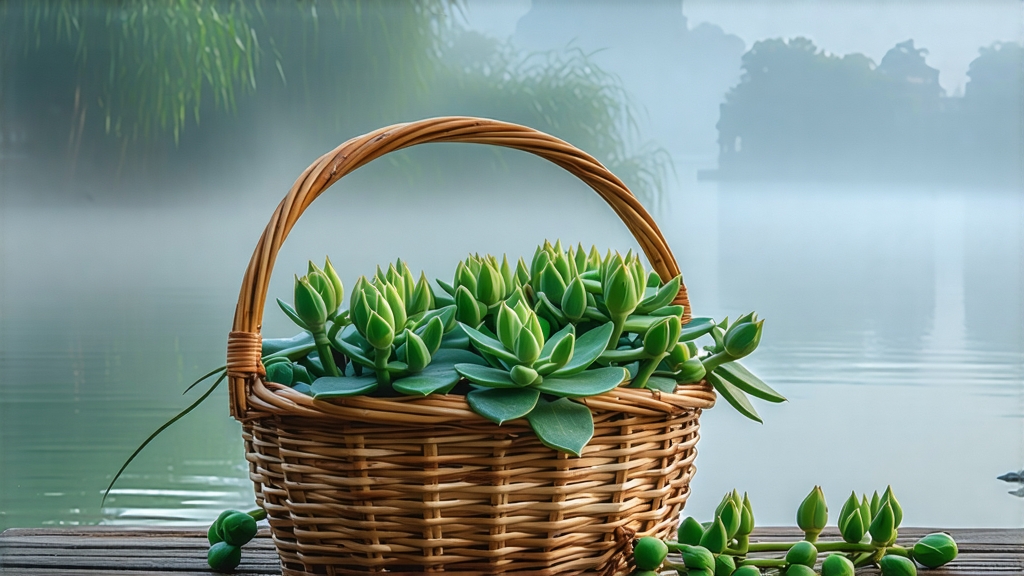
Tucked between the mist-cradled hills of Dongting Mountain and the gentle ripples of Taihu Lake in Jiangsu Province, Biluochun—literally “Green Snail of Spring”—has captivated Chinese tea lovers since the late Ming dynasty. Legend claims a nun found the tiny curled shoots exuding extraordinary fragrance on a secluded cliff; she christened the plant “Frighteningly Fragrant.” When the Kangxi Emperor tasted it in 1699 he considered the name too crude for an imperial tribute tea and rechristened it Biluochun for its snail-shell shape and spring harvest. Thus a modest wild tea entered the palace and, centuries later, the very short list of China’s Ten Famous Teas.
Although all Biluochun comes from the same narrow micro-region, growers distinguish three ecotypes defined by the surrounding flora. Orchard Biluochun grows among peach, plum and apricot trees whose blossoms imbue the leaf with unmistakable floral top notes. Wild-growing Tea is scattered through the forest understory, yielding smaller yields but deeper, more resinous aromatics. The third style, Lakeside Biluochun, is cultivated on terraced banks where cool humid air rolling off Taihu condenses into morning fog that acts like a natural shade cloth, slowing photosynthesis and concentrating amino acids that translate into sweetness and umami.
Plucking begins around the Qingming festival when each bud still wears its downy cloak and measures no longer than 1.5 cm. Experienced pickers break only the “sparrow’s tongue”—one unfurled leaf embracing the terminal bud—leaving the stem behind. A full kilogram of finished tea demands roughly seventy thousand such tips, all collected before ten o’clock so that dew does not add extra moisture that would complicate the kill-green stage.
Withering is almost unnecessary because the leaves arrive at the village factory still cool from the mountain air; instead they are immediately “diao qing,” or air-conditioned, on bamboo trays for thirty minutes to evaporate surface water. The critical pan-firing step follows, performed on woks heated to 180 °C. The master’s bare hand flips the buds against the iron surface, a motion that both deactivates enzymes and begins the spiral shaping. Temperature is then dropped to 70 °C and the same hand, now gloved with thin cotton, presses the leaf against the wok in a spiral stroke lasting forty minutes. This coaxes the bud to curl like a snail shell while the internal moisture drops to 30%. A final gentle bake at 50 °C for twenty minutes sets the shape and locks in the fragrance. When finished, a kilogram of leaf has lost four-fifths of its original weight and smells like a walk through spring orchards after rain.
To brew Biluochun well one must respect its delicacy. Use spring water low in minerals, preheated to 75 °C; hotter water scalds the down and releases harsh tannins. A tall, thin glass—not a clay pot—allows the foreign drinker to watch the “tea dance.” Three grams, about a level teaspoon, are plenty for 250 ml. Pour the water first, then drop the buds on top; they sink, rise, and slowly unfurl, releasing a pale jade liquor in ninety seconds. The first infusion is light, almost shimmering, with aromas of white peach and fresh pea tendril. The second, at two minutes, gains body and a faint nuttiness reminiscent of blanched almond. By the third, lengthened to three minutes, the cup still holds sweetness but adds a cool mineral echo from the lake stones. Good Biluochun yields five infusions before its soul drifts away.
Professional cupping follows a stricter choreography. Five grams are placed in a 150 ml gaiwan; water at 80 °C is poured to the brim and steeped for five minutes. The resulting liquor must present four “haves”: have bright color, have obvious down, have lasting aroma, have sweet finish. Aroma is judged in three waves—hot, warm, and cooled—looking for intensity, purity, and persistence. Top-grade lots keep their bouquet after the gaiwan lid has been off for ten minutes, a quality known as “cold lingering fragrance.” Leaf inspection follows: when spread on a white porcelain plate the buds should be uniform in length, intact, and exhibit a silvery green sheen with no red edges that would betray overheating.
Storage is simple yet unforgiving. Biluochun’s volatile jasmine-lactone compounds fade quickly; buy only what you will drink within six weeks. Keep it in an opaque tin, buried in the